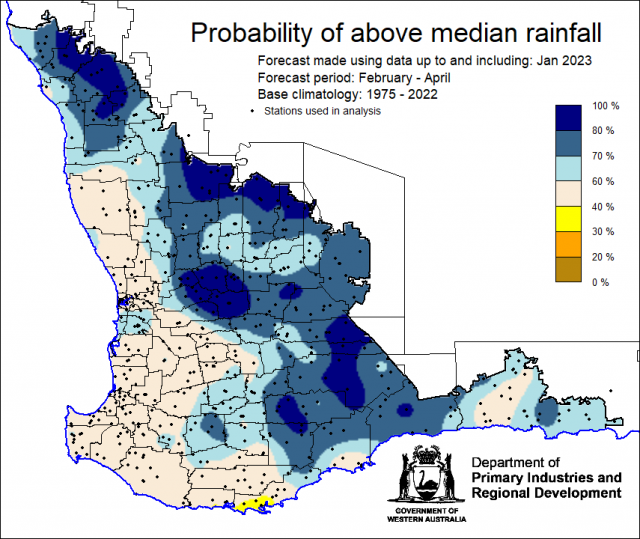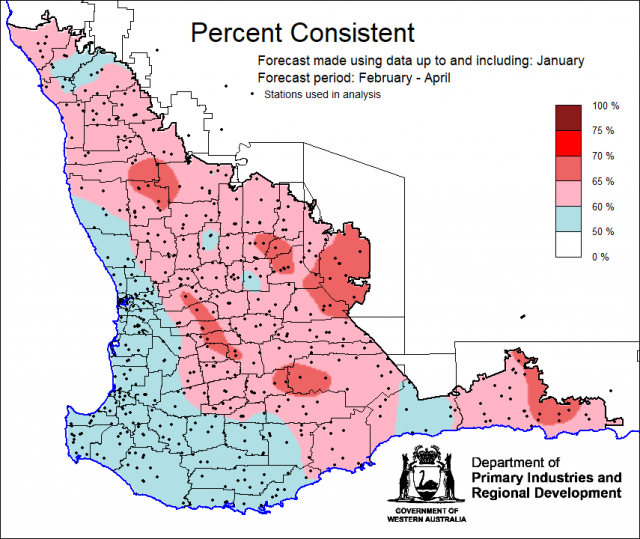Summary
The Department of Primary Industries and Regional Development’s (DPIRD) Statistical Seasonal Forecast (SSF) outlook for February to April 2023, is indicating greater than 60% probability of above median rainfall for the majority of the South West Land Division, although skill is very low this time of the year.
- For February to April 2023, the SSF forecast is indicating greater than 60% probability of above median rainfall for the majority of the South West Land Division. Neutral (40-60%) probability for parts of the Central West, Lower West, Great Southern, South West, South Coastal and South East Coastal forecast districts. The most likely decile range map is indicating decile 8-10 for the majority of the South West Land Division, decile 4-7 in other places. Skill is mostly poor at 50 to 70 % consistent.
- The Bureau of Meteorology’s seasonal outlook for February to April 2023 is indicating 25-45% chance of exceeding median rainfall for the SWLD, with poor to moderate skill (55-65%). The current longer-term outlook (at time of writing) for March to May 2023 is less than 45% chance of exceeding median rainfall with mostly poor skill (45-65%).
- Temperature outlooks for February to April 2023, from the Bureau indicate a 65-80% chance of above average day-time maxima. Skill is moderate 65-75%. For night-time minima for the SWLD, the Bureau is indicating 50-80% chance of exceeding above average temperatures, with the higher chances along the coast. Skill is moderate at 55-75%.
- January rainfall was below average to average. January maximum temperatures were average to above average, below average for South Coastal and South East Coastal forecast districts. Minimum temperatures were below average to average.
- The main climate driver influencing Australia rainfall is the La Niña in the Pacific, although it has little influence over rainfall in the SWLD. February to April, and March to May outlooks have lower skill than at other times of the year, due to the autumn ‘predictability barrier’ for forecasting ENSO.
Three Month Outlook for the South West Land Division
Statistical Seasonal Forecasting (SSF)
DPIRD’s Statistical Seasonal Forecast (SSF) system uses historical relationships between global sea surface temperature and sea level pressure with rainfall in south-west Australia to produce forecasts of rainfall for the coming months. Users can click on any station indicated on the map for location-specific forecast information from DPIRD’s Seasonal Climate Information pages.
For February to April 2023, the SSF forecast is indicating greater than 60% probability of above median rainfall for the majority of the South West Land Division. Neutral (40-60%) probability for parts of the Central West, Lower West, Great Southern, South West, South Coastal and South East Coastal forecast districts. The most likely decile range map is indicating decile 8-10 for the majority of the South West Land Division, decile 4-7 in other places. Skill is mostly poor at 50 to 70 % consistent.


